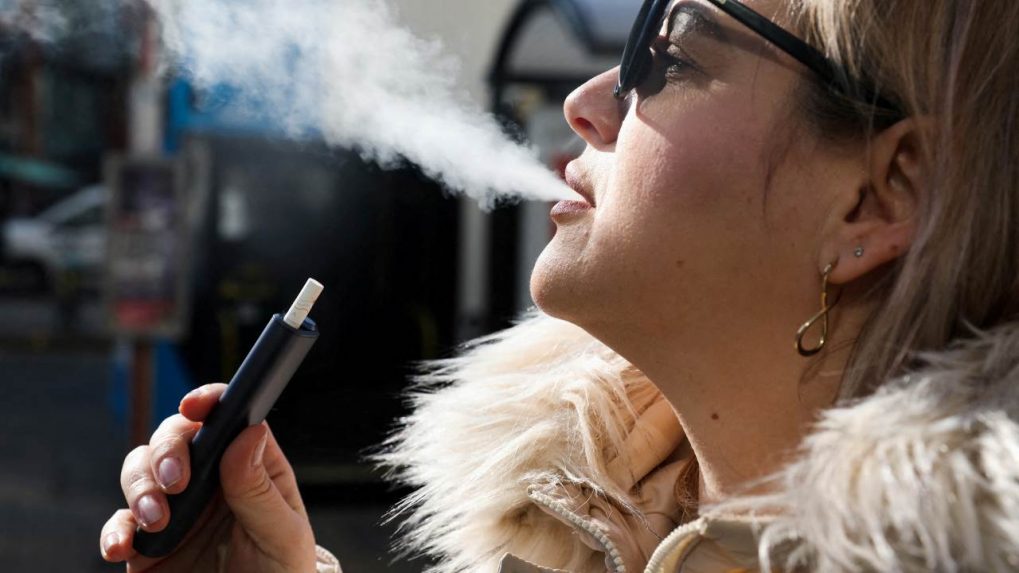New Delhi, India: Mothers Against Vaping, a united front of concerned mothers combating the escalating vaping crisis among our youth, has highlighted recent studies from the University of California San Diego (UC San Diego), the University of Auckland and the University of Sydney that have found a critical truth – individuals who indulge in vaping find it harder, not easier to quit smoking. This is an important finding since manufacturers and supporters have been alleged to position vaping as an alternative and effective smoking cessation tool.
Mothers Against Vaping emphasized that the findings of these studies are important lessons for Indian youth to resist the alleged propaganda of e-cigarette manufacturers who promote vapes, heated tobacco products (HTPs) and other new-age gateway devices as a means to quit smoking.
The UC San Diego study found that many people turn to e-cigarettes as a strategy to quit smoking, but this approach is ineffective; instead, e-cigarette use is associated with reduced tobacco abstinence. The researchers examined quitting success among both daily and non-daily vapers, and concluded with certainty, that vaping does not help smokers to quit this habit, and that in fact, it makes it harder to quit. The study noted that while most smokers believe that vaping will help them quit, this belief is not supported by scientific evidence. If a smoker is interested in quitting, has a smoke-free home, and does not smoke daily, they are likely to be successful, irrespective of whether they vape or not.
Researchers from the University of Auckland and the University of Sydney conducted a 10-year-old study, the findings of which challenge the claims of e-cigarette companies in associating vaping with a reduction in smoking. The study found that vaping is not displacing smoking among young people and may have even slowed New Zealand’s progress in preventing adolescent smoking. The research also shows that the prevalence of daily vaping in New Zealand increased from 1.1% in 2015 to 10% in 2023.
The UC San Diego research indicated that the idea that vaping helps people quit is not actually true, and it is more likely, that it perpetuates nicotine addiction.
Dr Rajesh Gupta, Director Pulmonology & Critical Care- Fortis Healthcare Noida and Member Mothers Against Vaping said – “There is a reason why it is difficult to quit smoking for those using e-cigarettes or vaping as an alternative. Because these devices deliver nicotine more smoothly to the body, often in higher quantities, the person remains addicted to nicotine and cannot give up e-cigarettes or smoking. The mechanism of how this works is the absorption of nicotine vapor into the bloodstream when using an e-cigarette triggers a release of dopamine, which is the brain’s pleasure chemical. This pleasure reinforcement sustains the addiction. There is also a chance that users of e-cigarettes, especially adolescents and the youth, may try more harmful substances through these electronic devices; hence, they are called new-age gateway devices.”
In the New Zealand study, 25 years of data (1999 to 2023) were analyzed from nearly 700,000 students aged 14 to 15 to examine the potential impact of vaping on smoking trends. While researchers expected to see a decline in smoking after vapes were introduced, they found that while youth smoking rates in New Zealand were declining steeply before vaping began in 2010, that progress has slowed. The data suggests that vaping may be encouraging more experimentation among young people.
The researchers opined that the rise in vaping could be because it is more socially acceptable.
Expressing her views, Dr Bhawna Barmi, Renowned Psychologist, Founder Happiness Studio and Member Mothers Against Vaping said – “One of the important factors for adolescents to try and experiment with new things is due to peer pressure, driven by the desire to be perceived as socially acceptable and part of the latest trend. We need to understand that children in this age group are very impressionable, and manufacturers of vaping products allegedly exploit this impressionable age group by employing marketing tactics, including the use of social media influencers to depict that vaping is cool. They also make it easier for the youth to try out these addictive electronic gadgets by offering attractive flavors and positioning vapes as the latest must-have tech gadget.”
The study in New Zealand revealed that in 2023, approximately 12.6% of 14 to 15-year-old students had ever smoked, nearly doubling the pre-vaping era predictions. Similarly, in 2023, regular smoking among Year 10 students reached 3%, far exceeding the projected 1.8% pre-vaping trend. The research contradicts a previous and oft-quoted study from 2020 that suggested vaping might displace smoking among the youth of New Zealand.
The UC San Diego study analyzed data from over 6,000 U.S. smokers in the Population Assessment of Tobacco and Health Study, a nationally representative sample. Among the 943 smokers who also vaped and comparing them to similar smokers who didn’t vape, the study found that smoking cessation was 4.1% lower for those who vaped daily and 5.3% lower for those who vaped, but not daily, compared to similar smokers who did not vape.
The study also highlighted that there is a common perception that vaping is less harmful and could be an effective way to taper off cigarettes. The study said that e-cigarettes are not harmless, though their long-term consequences over 20 to 30 years are not known, as it is a relatively new form of addiction. However, we are increasingly reading about the heavy metals and other harmful chemicals that are present in vapes and other new-age gateway devices.
However, Mothers Against Vaping has pointed out that there are numerous incidents globally that demonstrate the dangerous impact of vaping even after just a few years of use. One such heartbreaking case is that of a 12-year-old girl in England, which was widely reported in the media. The girl suffered lung collapse and spent four days in an induced coma. She had begun vaping when she was nine years old. In its short history, vaping had already caused an outbreak of e-cigarette or vaping product use-associated lung injury (EVALI) in the United States (US).
In 2019, thousands of Americans, particularly teenagers and young adults, were hospitalized due to EVALI, with many survivors suffering from long-lasting lung damage and pulmonary dysfunction. Following this EVALI epidemic, seven states in the US passed permanent restrictions on flavoured ENDS (Electronic Nicotine Delivery Systems) or vapes. The Food and Drug Administration (FDA) of the US government also restricted the sale of flavored cartridge-based electronic cigarettes.
The UC San Diego study was conducted by researchers at the Herbert Wertheim School of Public Health and Human Longevity Science and Moores Cancer Center at the University of California, San Diego, and it was published on 5th March 2025 in JAMA, a monthly medical journal published by the American Medical Association.
The New Zealand study was published on 21st March 2025 in The Lancet Regional Health – Western Pacific journal and conducted by researchers from the University of Auckland, Australia’s Cancer Council New South Wales, and the University of Sydney’s Daffodil Center.
Disclaimer: This media release is auto-generated. The CSR Journal is not responsible for the content.


